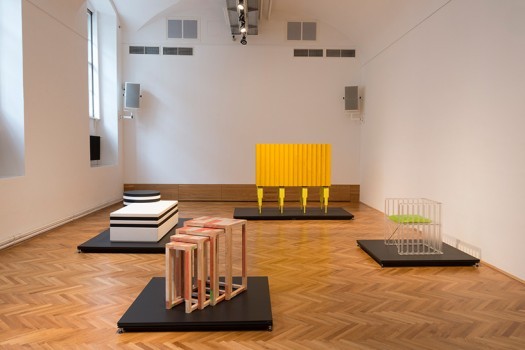Viennese Postproduction
29 Jul - 31 Aug 2014
VIENNESE POSTPRODUCTION
29 July – 31 August 2014
Curators: Marlies Wirth and Sebastian Hackenschmidt, Curator, MAK Furniture and Woodwork Collection
In his book Postproduction, published in 2002, the French art historian Nicolas Bourriaud employs the term postproduction to characterize contemporary art’s mode of production in the age of information societies: comparable to the postproduction of audiovisual recordings in the realm of film, television, and video or to sound recordings in the music world, art is increasingly concentrating on the reinterpretation and recontextualization of preexisting works. Traditional approaches are tested anew and brought back into play through their re-presentation. In the face of the changing social perception of production and consumption—but also of the original and the copy—many designers today are likewise less concerned with creating something fundamentally new than with augmenting and evolving existing approaches. Similar to a DJ’s remix, circulating designs are also reinvented and conventional production flows reprogrammed in the field of design.
It is the cultural domain of “Vienna around 1900” in particular that provides many Viennese designers with a significant challenge and source of inspiration for reinterpretations. With its famous protagonists—from Sigmund Freud and Arthur Schnitzler, Otto Wagner and Adolf Loos, to Gustav Klimt and Josef Hoffmann—Viennese modernism represents a period when Vienna was the center of far-reaching cultural, scientific, and sociopolitical developments and not least a place where the arts and crafts of the Wiener Werkstätte played a leading role. Reasons enough for many designers to address in their own way the approaches of the period and to reassess both their aesthetic effect and their social relevance. Typified by four positions—of the artist Ovidiu Anton, the designers Marco Dessí and Patrick Rampelotto, and the designer duo Copa—Viennese postproduction proves to be a playfully creative approximation to as well as a humorously ironic dissociation from this era in Viennese history.
29 July – 31 August 2014
Curators: Marlies Wirth and Sebastian Hackenschmidt, Curator, MAK Furniture and Woodwork Collection
In his book Postproduction, published in 2002, the French art historian Nicolas Bourriaud employs the term postproduction to characterize contemporary art’s mode of production in the age of information societies: comparable to the postproduction of audiovisual recordings in the realm of film, television, and video or to sound recordings in the music world, art is increasingly concentrating on the reinterpretation and recontextualization of preexisting works. Traditional approaches are tested anew and brought back into play through their re-presentation. In the face of the changing social perception of production and consumption—but also of the original and the copy—many designers today are likewise less concerned with creating something fundamentally new than with augmenting and evolving existing approaches. Similar to a DJ’s remix, circulating designs are also reinvented and conventional production flows reprogrammed in the field of design.
It is the cultural domain of “Vienna around 1900” in particular that provides many Viennese designers with a significant challenge and source of inspiration for reinterpretations. With its famous protagonists—from Sigmund Freud and Arthur Schnitzler, Otto Wagner and Adolf Loos, to Gustav Klimt and Josef Hoffmann—Viennese modernism represents a period when Vienna was the center of far-reaching cultural, scientific, and sociopolitical developments and not least a place where the arts and crafts of the Wiener Werkstätte played a leading role. Reasons enough for many designers to address in their own way the approaches of the period and to reassess both their aesthetic effect and their social relevance. Typified by four positions—of the artist Ovidiu Anton, the designers Marco Dessí and Patrick Rampelotto, and the designer duo Copa—Viennese postproduction proves to be a playfully creative approximation to as well as a humorously ironic dissociation from this era in Viennese history.

